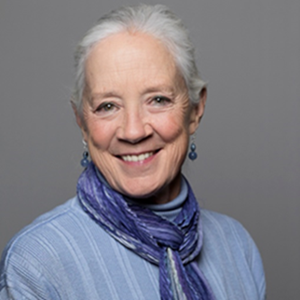Women in Radiology Spotlight: Seeing Is Believing

Women remain underrepresented in radiology practice and leadership. The Women in Radiology Q&A series is an initiative by the ACR RFS Women & Diversity Subcommittee to contribute toward gender equity efforts. The series highlights extraordinary women leaders who have made outstanding contributions to the field of radiology.
This edition recognizes Anne Osborn, MD, a distinguished professor of radiology at the University of Utah and a world-acclaimed neuroradiologist. She is the author of numerous best-selling teaching and award-winning reference texts. Dr. Osborn was also recognized in 2005 as one of Ernst & Young Utah’s “Entrepreneurs of the Year,” for co-founding “STATdx®”, the first-of-its-kind online radiology reference that is used throughout the world. She has received numerous awards and gold medals nationally and internationally, including the Marie Curie Award from the American Association of Women in Radiology, the first ever RSNA’s Outstanding Educator Award, and the Beclere Medal from the International Society of Radiology.
What helped you succeed in a male-dominant field?
During my radiology training at Stanford, Helen C. Redman, MD, who later became the first woman president of RSNA, was a visiting professor. She was a great example. I also realized early on that people value expertise and knowledge. Gender and what you look like should not limit you.
What are activities you enjoy outside radiology?
I enjoy hiking the mountains and foothills in Utah with my sister and two dogs. I also like reading historical and science fiction books and novels that explore different times and places.
What is your advice to trainees?
There is no substitute for hard work. Be intellectually curious and expand your knowledge. Go beyond what your faculty expect. Be humble and willing to learn anywhere, anytime, and from anybody. I am still learning myself. I always encourage my fellows to teach me something I don’t know. Learning radiology can be overwhelming, but remember that life is a balance and every person has a unique path, pace, and rhythm.
How does one succeed in academia?
Besides working hard, having good ideas and being able to follow-through are really important. It is one thing to make a good start by presenting an abstract or interesting case, but what sets people apart is the ability to do the hard part and write it up. Be open to reformatting and changing your career direction. I changed the course of my career three times without changing institution.
How close we are to our goal in diversity and inclusion?
We’ve made a lot of progress, but our job is far from done. We should be aware and do what we can as individuals and institutions. For example, several of my colleagues and I are involved with a program that helps high school students from disadvantaged backgrounds to obtain post-secondary school education. It is the first step on the ladder to success.
What are some ways in which trainees can contribute to diversity efforts?
Be a role model. Take the initiative to reach out to high school and first-generation college students. Medical schools have outreach programs and conduct campus tours. Get involved and help spread information about programs created for underrepresented minorities. Unfortunately, several scholarships go unfilled because people don’t know about them.
What are some of your global outreach efforts?
I’ve traveled to parts of the world where the needs are great. I’ve spent significant time teaching the professors at community hospitals in those places. If you teach the teachers, they will teach the residents who will practice in wider geographical areas and impact patient care.